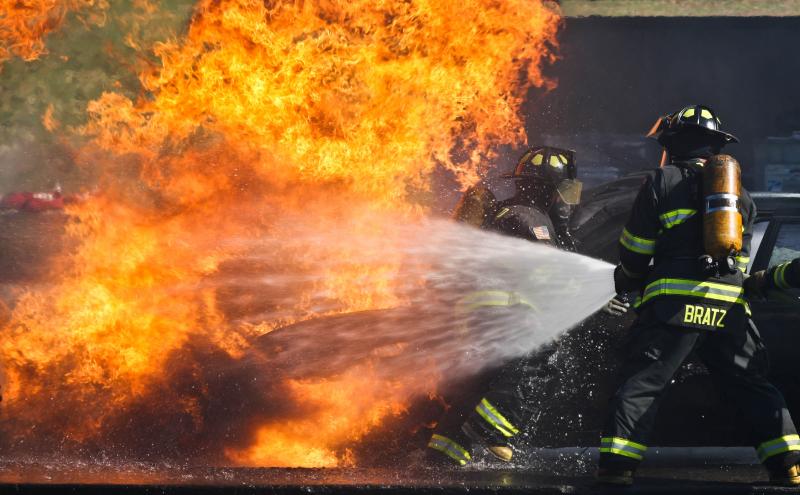
Port of Seattle Firefighters train in auto extrication on vehicles obtained from wrecking yards. Multiple cars are brought in, placed strategically to simulate auto accidents, and have training dummies placed inside. The scenario is developed to train them on technical skills as well as to challenge their decision making as they apply various tactics to secure the vehicles and save the occupants.
Saws, Hurst tools and other pieces of heavy equipment are used in simulated auto extrications. Vehicles are set up to simulate accidents with trapped passengers. The firefighters must effectively tear apart the vehicle to safely get to the passengers. As well as keeping current with their proficiency with the tools, they learn about the structure, systems and challenges that occur with various automobiles.
Our firefighters are trained to deal with HazMat calls, such as fuel spills, as well as more volatile incidents involving dangerous chemicals or potential biological threats. Our HazMat team members are trained and equipped to be a key element in the airport’s commitment to public safety.
Port of Seattle Firefighters hone their skills on structure fires at the State Fire Academy at North Bend. Building fires and aircraft fires are two distinct scenarios and our firefighters must be proficient at both. Port of Seattle Fire Department’s primary responsibility is Aircraft Rescue Fire Fighting (ARFF). Using the facility at the State Fire Academy at North Bend, we train on a mock-up with burning jet fuel, practicing attack tactics with specialized ARFF trucks. These vehicles carry 3,000 gallons of water and 500 gallons of foam, specially designed for battling a high intensity fuel fire.
Each morning, at shift change, all members diligently check their vehicles and equipment to ensure their safety and readiness. Physical fitness is a vital part of the firefighters’ routine. The job requires a great deal of physical strength, under stressful conditions. We have on-site facilities and certified physical trainers to help meet the members’ physical goals. Some take their skills beyond the job, participating in Firefighter Competitions, charity runs, triathlons and other events.
A unique tool the department uses is an aircraft mock-up designed for aircraft approach, entry and tactics training on the airfield. The smoke generated is not harmful to the environment and provides a realistic challenge.
Beyond training on an aircraft fire with the ARFF vehicle, the firefighters also drill using hand lines. The experience and skills developed in these live fire situations are invaluable. As one of the firefighters said, “It’s one thing to know what you have to do, and it’s another to remember it when you really feel that heat.”

